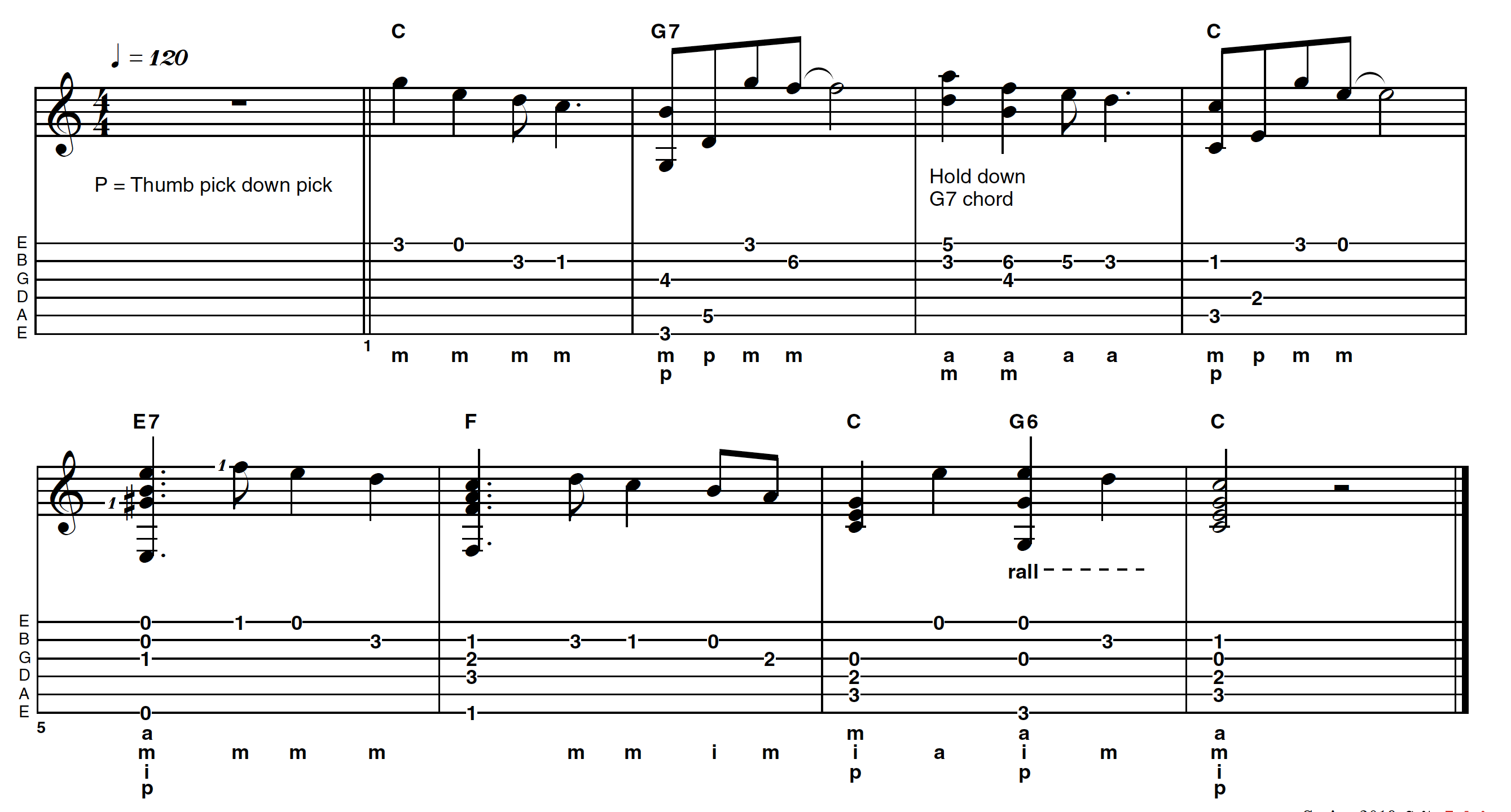"When you practice the skills enough, one day, just like magic, the skills turn into music": Tommy Emmanuel's thumbpicking masterclass
Video lesson: Tommy Emmanuel takes us through the basics of how to use a thumbpick so you can play your own version of Elizabeth Cotten’s Freight Train

All guitarists get that lightbulb moment when a technique or theory suddenly becomes transparent. For Tommy Emmanuel it was looking at a Chet Atkins album cover and spotting a thumbpick: “So that’s how he does it,” said the young lad.
Fundamentally, a thumbpick adds weight to the thumb, giving basslines clarity and space in the mix between the thumb and fingers. In interview Tommy talked about songs like Guitar Boogie that are used as a skeleton for taking wherever you want, using the skills you’ve learned that enable you to improvise.
Freight Train is also often used as such a vehicle, especially in the acoustic or country world where it lends itself to fingerstyle, hybrid picking or, as we shall see, the thumbpick style of Atkins, Tommy and others. Of course, we know of Tommy as one of the most technically adept musicians, irrespective of the fact that he chooses acoustic guitar as his weapon of choice. But in this video he brings thumbpicking down to its absolute basics, showing exactly how he taught himself the nuts and bolts before putting it all back together so fluently.
Tommy begins with a highly engaging chat on being in tune.“I tune up because I care, but also when you play solo it’s very exposed,” he explains. He follows with an equally interesting discussion on the thumbpicks themselves; the different types, which gauges he likes, how he often grips the pick with his first finger and uses it like a flat pick, and how not to wear it too tight or you’ll get “blue finger!” He’s no snob, either; he simply buys a bag of medium Jim Dunlop thumbpicks and pulls out those that feel good to him.

Thumbpicks come in similar thicknesses, materials and prices as regular picks. They also take a while to get used to so spend time discovering which type works for you. Don’t go too expensive at first; you can pay lot of money but Tommy Emmanuel (the master) is happy with medium gauge Jim Dunlops. If you find the pick part is too protruding you can file it to shape and smooth the edges using a good nail file; and if the pick doesn’t quite fit you can heat it in a cup of hot water and bend it to the desired shape before it hardens.
Tommy starts his lesson in earnest by describing how to just practise the thumb part, alternating the bass note and (usually) the 5th with a ‘ghosted’ part chord. Leave the fingers out entirely he says, telling of how when he was teaching guitar in Australia he’d tell students to rest their fingers on the guitar top; he’d then tape them down so they couldn’t move. “They’re rebellious digits,” he jokes; “they always want to join in.”
Next he introduces the fingers. “Second step is the beginning of getting your fingers to do something different from the thumb.” He demonstrates by playing a simple C-F-G chord part on top, yet it already sounds impressive. The third step moves it up a notch. “It’s to create something where the thumb stays steady and the fingers do something against it,” explains Tommy. “It’s the beginning of your brain and hand connecting, and your hand doing what your brain tells it. It will be a mental conundrum for a while, but it will kick in if you keep at it.” He then plays a slightly syncopated chord part on top.
Using our C-F-G sequence Tommy now plays an arpeggio on top of the rocking thumb, getting into Streets Of London territory. “If you can play that after practicing it slowly for a while, then you’re ready to learn a song,” says Tommy. “And the song I suggest you learn is Freight Train. But you have to realise that it’s not music yet; this is learning skills. When you practice the skills enough, one day, just like magic, the skills turn into music.”
All the latest guitar news, interviews, lessons, reviews, deals and more, direct to your inbox!
Tommy now runs through the ‘head’ of Freight Train bar by bar, putting together everything he’s told us so far. He rounds things off with a full rendition in proper Tommy Emmanual style. Below is the full video – which we recommend watching before you start the exercises – and then with each example the videos should start at approximately the correct place. And if you don’t want to rush out and buy a thumbpick or two after that, then we’ll eat the office fedora.
EXAMPLE 1
The first thing to note is that Tommy says that it took him 10 years to feel comfortable with a thumb pick and so resign yourself to the fact that it will feel strange and unwieldy at first. This first example is a workout for the thumb – we’re not employing any fingers yet. This is the most important part to get firmly established in the head and hand as everything else will spring from what you’re doing here. So work slowly and don’t move onto the next exercise before the information here is bedded in.

EXAMPLE 2
Now we’re going to introduce the fingers into the chord progression. If you were able to master Ex 1 to the extent that you can do it in your sleep, this will be easy – if not, it’s back to the woodshed! Inserting the chords with the fingers shouldn’t give you too much trouble as there’s no syncopation here, you’re just playing the chord on the first beat of the bar in time with the thumb.

EXAMPLE 3
We’re turning up the heat a little here as now we’re going to introduce the chords on the first beat once again, but we’re also going to employ them on an offbeat. You’ll need to study the video in order to hear – and feel – where it fits in but, loosely speaking, it’s just after the second beat and right before the third. Don’t worry too much about it and, more importantly, don’t allow yourself to become frustrated if all the pieces don’t fit straight away. Practise is your friend here.

EXAMPLE 4
In this exercise, we’re not playing anything new, we’re just organising what we’ve already learned differently. This is where things start sounding more musical – but take note of what Tommy says: “The skill comes before the music!” So whereas it might feel like there’s a lot going on in your right hand and that thumb pick still feels a little alien, keep on working at it and also refer back to the video to see and hear what Tommy is doing and all should be well.

EXAMPLE 5
It’s graduation day! This is where we put everything together and play a tune. In order to keep things really simple, we’ve transcribed the melody separately and if you study the video you can see that all the melody notes fall under the fingers. It’s probably a good idea to make sure that you know the melody thoroughly before trying to combine the parts together – referring to the video will help a lot. The most important thing is to take things very slowly at first, build your confidence and dexterity and then slowly bring the tune up to tempo.

This lesson first appeared in Guitarist present Acoustic, a special from May 2018.
Tommy Emmanuel is an Australian guitarist, who's worked as a session player and won awards for his solo recordings. He is one of the finest acoustic players working today. In 2019, MusicRadar named him as one of the 10 best acoustic guitarists in the world.

